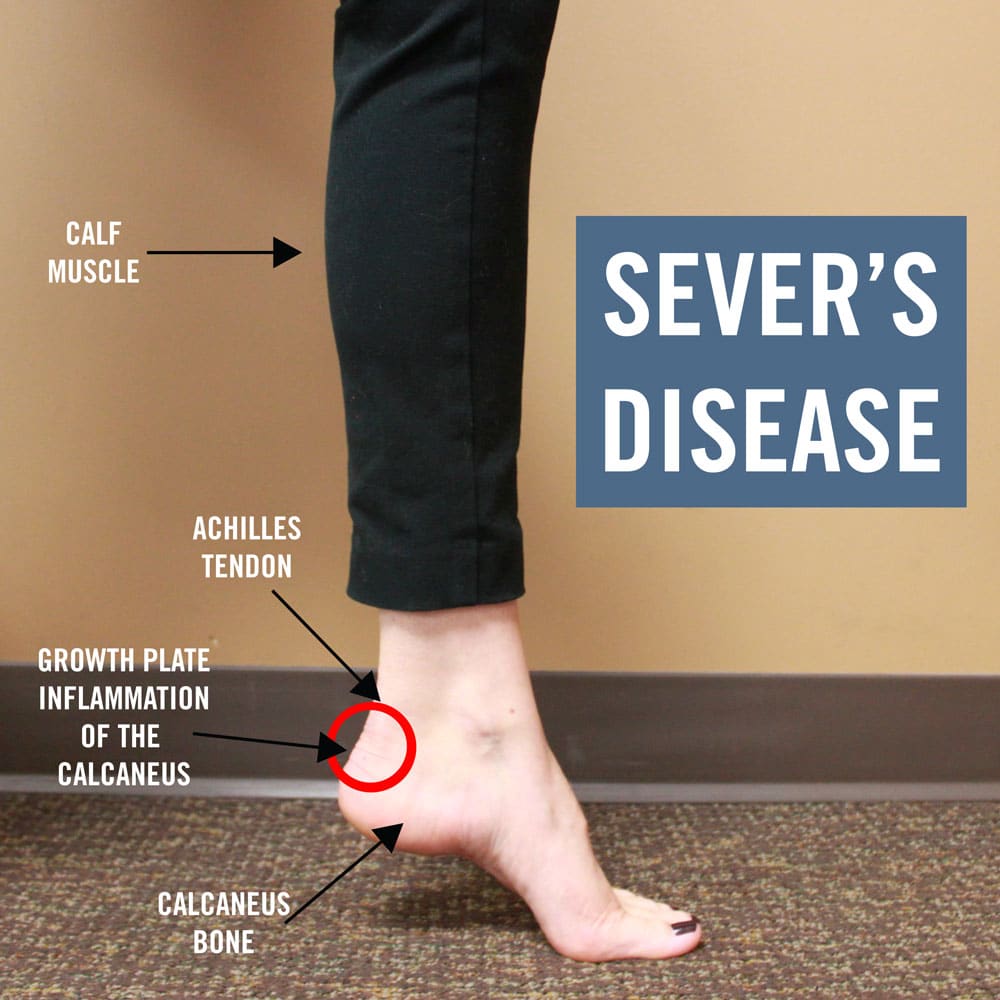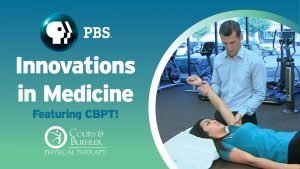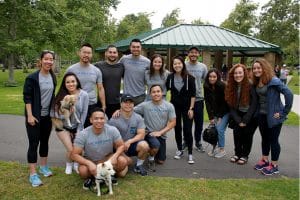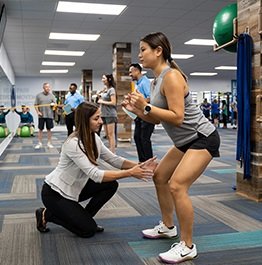
Common Heel Injury in Children: What is Sever’s Disease?
December 08, 2015What is Sever's disease?
Although the name sounds pretty frightening, Sever’s disease is a common heel injury that occurs in children, especially those who participate in high-impact sports such as gymnastics. Sever’s disease, also called calcaneal apophysitis, is a temporary painful bone disorder that results from inflammation (swelling) of the growth plate in the heel. Typical onset usually occurs during the growth spurt of adolescence, beginning at any time between the ages of 8 and 13 years old for girls and 10 to 15 years old for boys. The condition rarely occurs in older teens due to the fusion of the growth plate and bone maturity.

Possible Causes
• “You are 1 in a million”
Or so the saying goes, which happens to be 100% true. In terms of risk for injury, it is important to understand the difference between a young athlete’s chronological age and developmental age. For example, an athlete may be “12” years old, but developmentally may only be “11” as seen in late bloomers. Understanding this concept of long-term athletic development is crucial to appropriately adjust training conditions. In doing so, can help the young athlete through a high risk injury period with as minimal symptoms as possible.
-
• Poor Landing Mechanics
Although there is not one perfect way to land in gymnastics due to the variability in skills, it is important for each gymnast to learn and practice landing mechanics with use of a proper squat. It is very common for a gymnast to demonstrate a very stiff, feet together, knee dominate, hollowed spine landing – increasing the force of the load at the ankles. Therefore, using proper squat form becomes essential to help control high forces throughout the legs by dispersing the load up the chain.
-
• Mobility verses Stability
Another high indicator to the onset of Sever’s disease is how the structures above the ankle joint are functioning. Problems can arise if there is a lack of mobility and poor lower leg alignment, static stability (e.g. standing on a single leg) and/or dynamic stability (e.g. movement skills). When there is poor muscle control from the foot to the ankle, ankle to the knee and up to the hip, the alignment of the leg becomes unstable. This can lead to reduced function of the small stabilizing muscles, allowing the bigger muscles to over-perform (e.g. calf muscle).
Pain Management
The immediate goal of treatment is pain relief. Because symptoms generally worsen with activity, the main treatment for Sever’s disease is REST to allow a decrease in pressure on the heel bone and decrease in swelling, ultimately reducing the pain. Additional treatment can include possible immobilization (boot), ice, and medication for the reduction of inflammation.
Protecting the heel itself, may also reduce the pain symptoms of Sever’s disease. It is important for the athlete to select a shoe that provides the proper heel lift and/or arch support to decrease the stress on the calcaneus and Achilles’ tendon. Heel lifts or heel cups, which can be placed in a shoe or taped to an athlete’s foot for barefoot activities, can be used to prevent excessive stress on the bone and adjacent structures.
So what can be done to improve flexibility and decrease the stress to the heel?
The following exercises can be performed to increase ankle range of motion, stability, tendon extensibility and strength:
1. Calf & Heel Cord Stretch
Hold your stretch for at least 30 seconds up to 1 minute for each position.


2. Single Leg Balance
At first you may use your hands, like holding onto the back of a chair, table, or the wall. As balancing gets easier, takes your hand(s) away and place them out to the side. Challenge yourself by bringing your arms across your chest. Close your eyes for an even greater challenge.


3. Heel Raises
Count to “3” on the way down to focus on the motor control and calf strengthening without excessive side-to-side movement.


4. Lunges
Focus on alignment of your knee over your ankle to maintain ankle stability.

* Strengthening exercises can be performed 10 times for 2 sets of each activity.
Take the Next Step!
Experiencing heel pain? Sign up for a free assessment:
Reader Interactions
Leave a comment
You must be logged in to post a comment.





